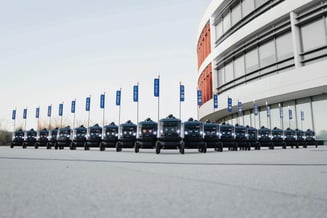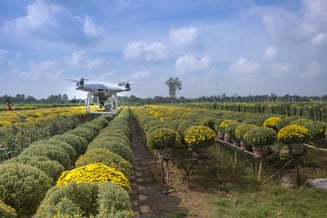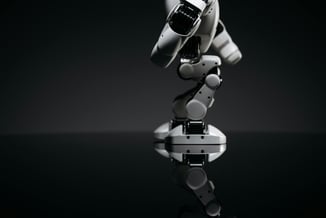For robotics-as-a-service companies asset management is critical. If you don't know what you have, who it's leased to, and when it needs preventive maintenance, you're risking your profits on unnecessary downtime. But due to the complex nature of robotics, finding a tool that tracks your robot assets and maintenance plus all the modules/components installed on the robot can be tricky. Not only that, but many asset management tools don't make it straightforward to handle assets that are leased to a business' customers.
Here’s a look at five tools that can help. Each can track robots and their components to different degrees, but they vary a lot in flexibility, automation, and scalability. We'll discuss the pros and cons of each tool to help you decide what will be best for your business.
Starhive
What it is:
A flexible asset and maintenance management platform that lets robotics companies track all their assets, maintenance tasks, and supporting data. Starhive focuses on creating digital twins and storing extra data, such as customers and lease agreements, to provide more context to your robots.
Pros:
-
Fully flexible data model that allows for comprehensive digital twins
-
Custom automations for specific reminders and updating data
-
Full history of changes is stored and searchable to help with audits and compliance checks
- Strong task tracking, with request portals that can be shared with customers to log issues
Cons:
-
Requires initial setup of a personal data model which can take a bit more time
-
Less suited to very small teams that are still in the R&D/proof-of-concept phase and have few assets
UpKeep
What it is:
A CMMS (Computerised Maintenance Management System) focused on asset maintenance, preventive schedules, and field service.
Pros:
-
Strong in maintenance task tracking
-
Integrates with IoT sensors
-
Good visibility on downtime and service trends
Cons:
-
Not built for lease or rental models
-
Can get expensive as you scale the number of assets
-
Limited flexibility in data structures, meaning complex robots can be hard to map
Spreadsheets
What it is:
Still the starting point for many teams. A simple set of sheets for tracking robots, components, and customer details.
Pros:
-
Free and instantly available
-
Easy for quick data capture
-
Simple for small fleets or pilot projects
-
Familiar to everyone
Cons:
-
No real-time updates or automation
-
High error rate and version conflicts
-
Impossible to scale beyond a few hundred assets
Asset Panda
What it is:
An asset tracking platform with configurable fields and workflows that can be adapted for leased robots and their customers.
Pros:
-
Relatively open data structure that can be adapted for robot and lease tracking.
-
Good mobile experience for audits and servicing
-
Straightforward reporting
Cons:
-
Lacks real-time integrations or IoT data capture
-
Relationship handling between parent/child assets is limited
-
Limited custom automations can create data quality issues
-
Less suitable for scaling or multi-customer models
Fiix
What it is:
A maintenance and asset management platform by Rockwell Automation, focused on industrial and manufacturing environments.
Pros:
-
Good for predictive and preventive maintenance on robotic systems
-
Integrates well with PLCs, sensors, and other industrial data sources
-
Mature reporting and work order management
-
Backed by Rockwell, meaning strong industrial ecosystem support
Cons:
-
More focused on maintenance than contract or lease tracking
-
Complex interface for non-technical users
-
Overkill for smaller robotics firms
-
Less flexibility to model unique customer or component relationships
Summary
For robotics-as-a-service companies or vendors maintaining advanced robots for clients, flexibility and automation are everything.
| Software | Biggest strength | Biggest downside | Most suitable for | Price |
| Starhive | Ability to add supporting data and map customers and lease agreements to robots | No live telemetry | Scaling teams that need asset management and to track leases in the same tool | $$ |
| UpKeep | Predictive maintenance abilities and live telemetry | Costly for teams that want customisation or are scaling | Teams that value live data from their sensors in their asset and maintenance management system | $$$ |
| Spreadsheets | Speed of setup | Poor data accuracy | Small teams just starting out or for temporary projects | $ |
| Asset Panda | Strong mobile app for updating assets in the field | Parent/child relationships between assets are limited | Teams that do not require mapping robot components and only have a few customers | $$$ |
| Fiix | Predictive maintenance abilities and live telemetry | More focused on manufacturing than tracking robots once leased | Large scale robotics business or OEMs | $$$$ |
Table1: comparison of different robotics asset management software tools.
Starhive stands out for its ability to unify robots, components, customers, and contracts in one connected data model. For smaller businesses with fewer than 100 things to track, spreadsheets may do the job for now. For larger organisations with big budgets and need live sensor data, UpKeep and Fiix are likely the most suitable robotics asset management software.
.png)



